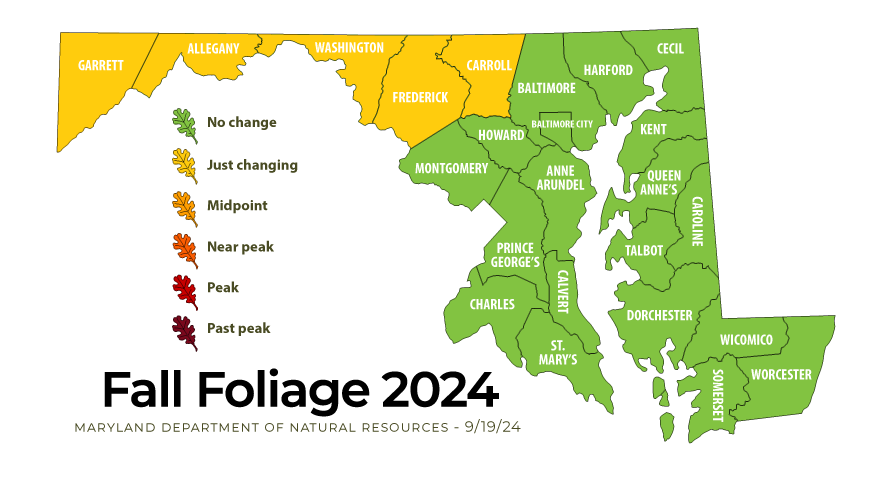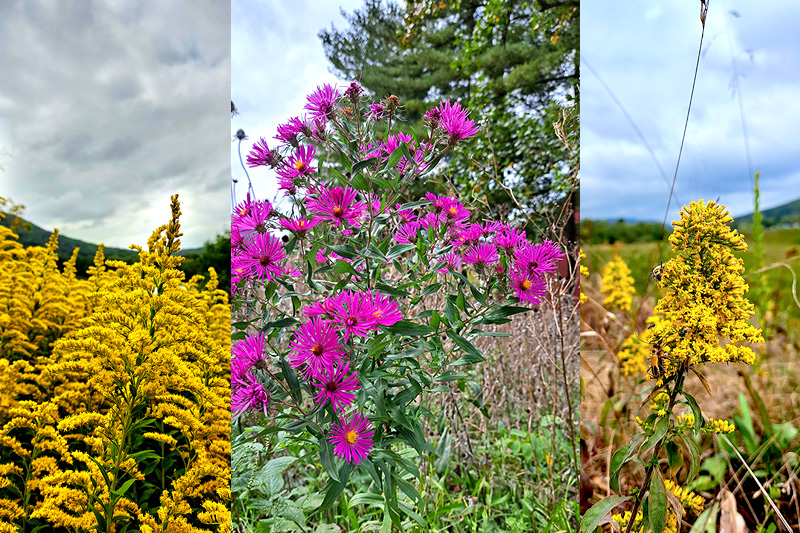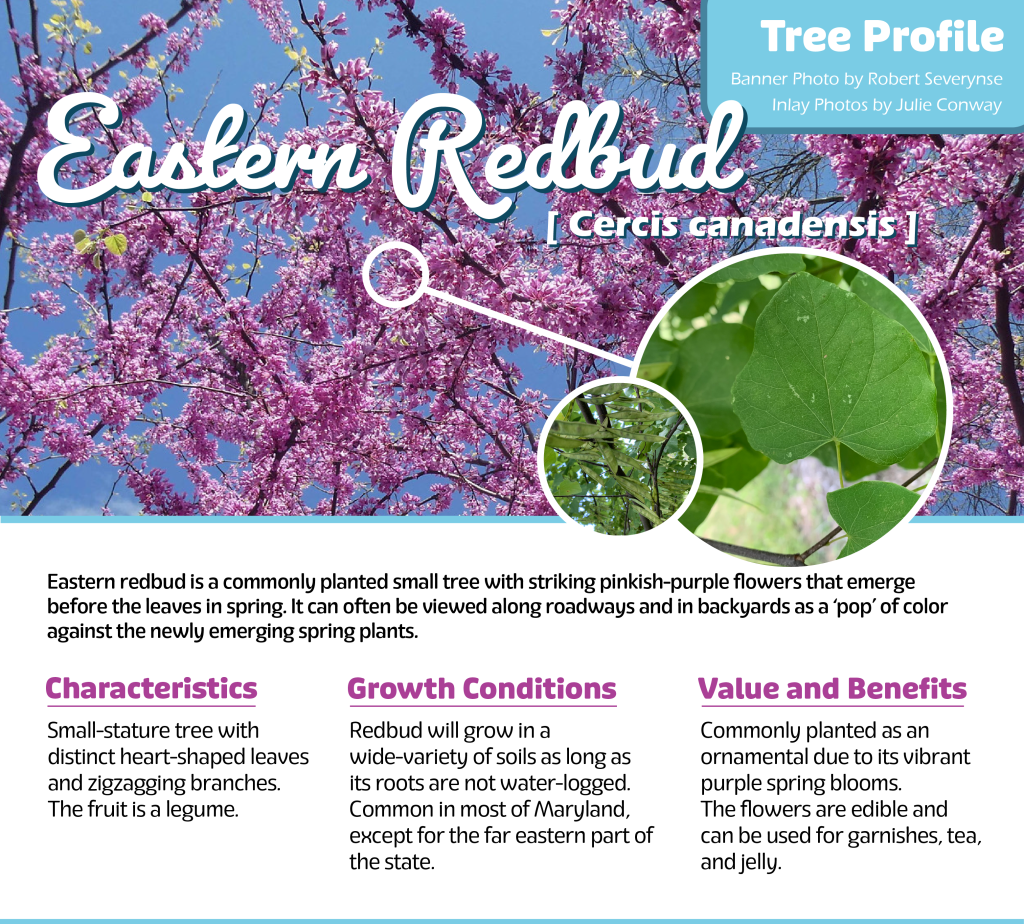Welcome to the Maryland Fall Foliage Report for 2024. Fall officially begins on Sunday, September 22 at 8:44 a.m.
Many of Maryland’s trees are changing color earlier than usual this year due to drought. Marylanders can also expect to see more yellow and gold tones, and fewer reds and purples.
Forester Melissa Nash in Garrett County says leaves are two weeks ahead of schedule in Maryland’s westernmost jurisdiction, which is experiencing extreme drought.
“While we will still have a fall color display, I anticipate it may peak earlier than normal and we will see more muted colors and more yellow to golden tones as opposed to vibrant colors, again due to lack of moisture,” Nash says.

Following an extended dry spell, the sugar maples at the Potomac Garrett State Forest Headquarters produced a short lived burst of oranges and yellows before succumbing to gravity. Photo by Scott Campbell
Yellow and gold leaf colors are produced by carotenoid pigments, which are ever-present in the leaves and are therefore less dependent on weather conditions.
The most brilliant leaf displays follow a period of warm, sunny days and cool nights. Leaves produce an abundance of sugars during the sunny days. The cooler nights and gradual narrowing of leaf veins in the fall mean that a majority of the sugars produced are trapped in the leaf. A wealth of sugar and light in the leaf leads to the production of vivid anthocyanin pigments, which produce red, purple, and crimson colors.
Those looking for color shouldn’t lament – Maryland is home to some vibrant native flowers that are blooming this time of year. Forester Bob Schwartz describes Maryland’s asters and goldenrods as “truly belles of the fall ball.”
“These species groups are highly important for pollinators working to provision their eggs for winter and come in all shapes and sizes,” Schwartz says. “The purple of New England aster strikingly complements the golden hues from their frequent cohabitating goldenrods, directing more pollinators to each other.”
As always, we want to see what the fall colors look like in your area. Please submit reports and images through our submission form. We’ll try to include them in our foliage reports. We’ll be publishing field reports from our regional experts each week so you can plan for some great fall outings!
Field Reports
Western Maryland
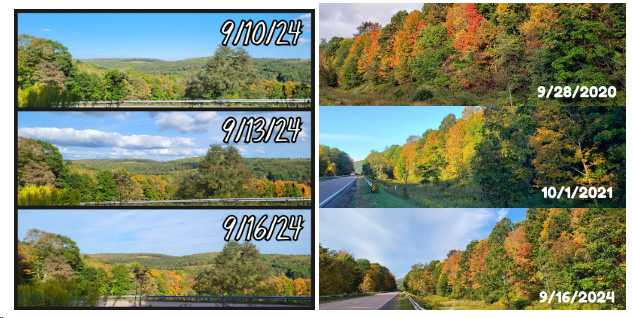
The image compilation on the left shows the change in fall colors between Sept. 9 and Sept. 16. On the right, the comparison demonstrates how much earlier leaves are changing this year, compared to 2020 and 2021.
Forester Julie Conway, Allegany County
The colors on Dans Mountain Wildlife Management Area are changing daily. Only one week earlier, there was little to no sign of color change.
This past week, Maryland Department of Natural Resources staff teamed up with The Nature Conservancy and Allegany College of Maryland to conduct fire effects monitoring; the team observed color changes where one week earlier there was little to no sign of them.
Along with trees, other woody species are changing color.
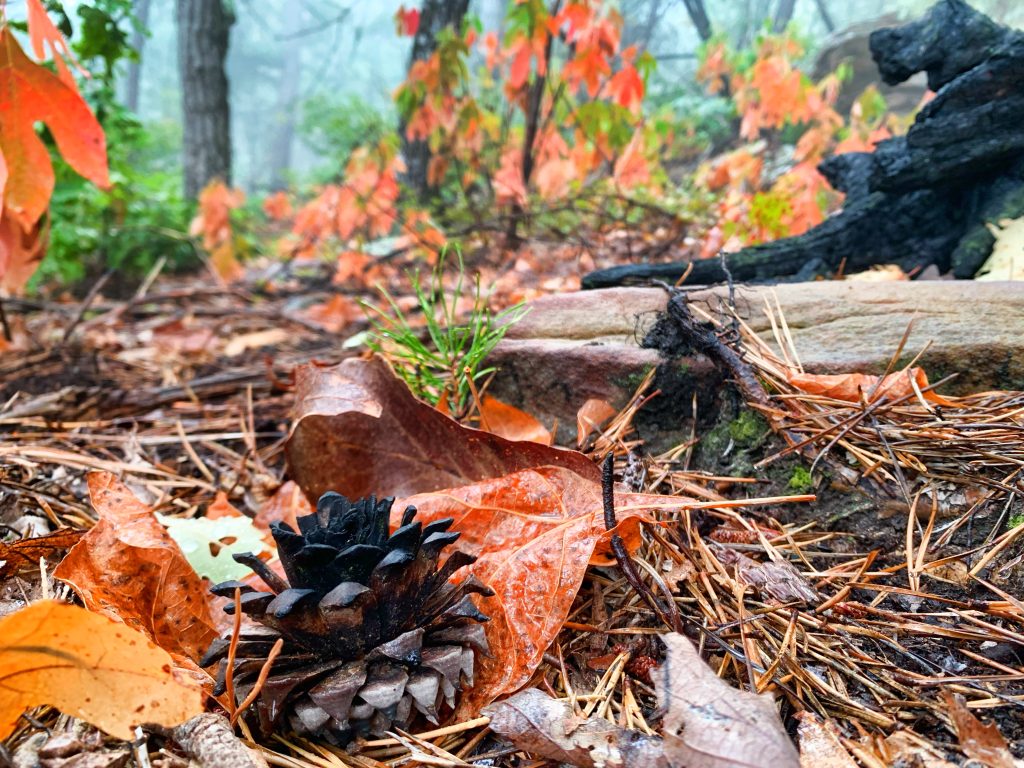
A charred cone from a table mountain pine, a fire adapted species, can be seen in the foreground with vibrant orange sassafras leaves behind it. Maryland Department of Natural Resources photo.
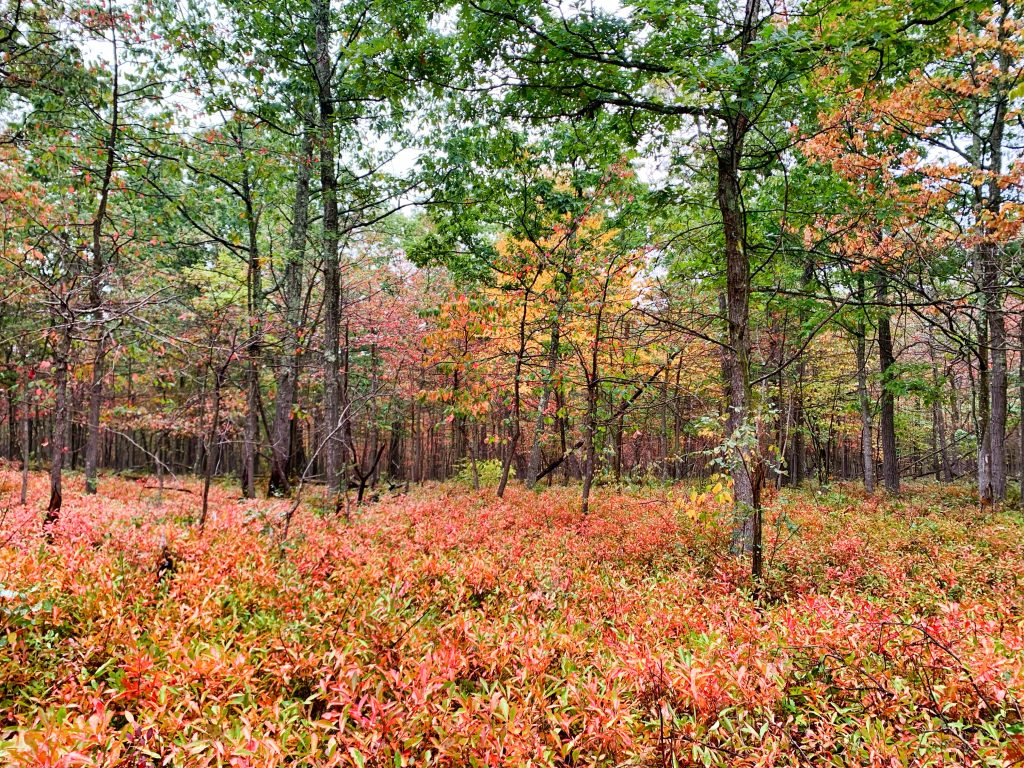
The wild blueberry which carpets the ground in some areas on Dans Mountain is currently an eye-popping red. Maryland Department of Natural Resources photo.
Forester Melissa Nash, Garrett County:
Starting to see a good bit of change early in the season. We are about 2 weeks ahead of normal in some parts of the county.
We are definitely seeing changes earlier this year due to the drought. Most of Garrett County has been in severe to extreme drought since July and there is little rain in the long range forecast. We are seeing trees dropping leaves earlier as well. This is a result of stress due to lack of water.
Also due to the dry conditions I would recommend against burning leaves or other yard debris and brush until we receive significant rainfall. A permit is required from the respective county Forest Service office for daytime open air burning (7 a.m. to 4 p.m.).
Most county health departments in Maryland also require a permit from their office for open air burning, though specific requirements and conditions may vary from county to county. More on the Forest Service open air burning regulations is available on the Maryland Department of Natural Resources website.
Forester Aaron Cook, Washington and Frederick Counties:
There is some drought-induced foliage change occurring in walnut, maple, sumac, and boxelder. These are typically early leaf changers, but they are earlier than normal this year. That effect intensifies moving west, where drought conditions are more severe.
I would expect the usual late October peak for Frederick and Washington Counties.
Colors will likely be muted on our mountain ranges, and the peak may be the 3rd week rather than the last week of October this year given the drought conditions of this summer and last. We could use rain, but hopefully a high pressure system with stable, dry air, and bluebird skies lines up with the peak week to keep it on the viewshed for scenic enjoyment.
Watershed Forester Bob Schwartz, Washington County:
Some of the early leaf changers are beginning to turn in Washington County.
Among them is our native staghorn sumac. One of the woods’ edge thicket species often pushed out by invasive shrubs, its vibrant scarlet is one of my personal harbingers of autumn.
Not to be outdone, asters and goldenrods are truly belles of the fall ball. These species groups are highly important for pollinators working to provision their eggs for winter and come in all shapes and sizes. The purple of New England Aster strikingly complements the golden hues from their frequent cohabitating goldenrods, directing more pollinators to each other. From the aptly named tall goldenrod to the more diminutive gray goldenrod, across Maryland, there are asters and goldenrods for all residential landscape situations and forests alike.
Some other great autumn wildflowers are also in full swing. Tickseed sunflower, so named for its seeds resemblance to a certain forest pest, is an annual whose seeds fill in bare areas in plant communities and help keep invasive species from germinating. As with the fall foliage, something new will keep coming with some species blooming until a hard frost.
Fall Events
Stay tuned for events happening this fall at our state forests and parks. The Maryland Office of Tourism also has some events on their website so you can plan your perfect weekend getaway.

Maryland Department of Natural Resources photo.
Watch the Sky
Welcome stargazers! For this week…
- Neptune will be at its closest approach to Earth on September 21. To the naked eye it will just be a speck of light, but if you have a telescope, you’ll get a better view, it will be full illuminated by the sun.
- On Sept. 23 the moon will creep close to Jupiter. Look towards the southeastern horizon after sunset.
- On Sept. 25 the moon makes its way to Mars. With binoculars or a small telescope, you should be able to see the Martian surface.
- Next week, the comet Tsuchinshan-ATLAS will be near the sun and may be visible!
As the fall goes on, we have two more super moons, a few meteor showers ,and another comet. We’ll have updates each week. And if you get any photos of these events, please share them and we’ll put them in the report!

